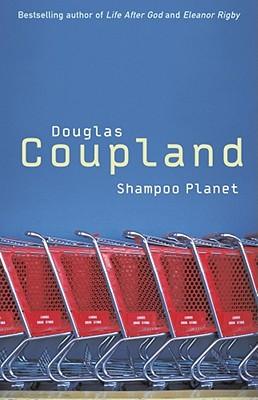
Shampoo Planet
by
Douglas Coupland
Published 28 Dec 2010
I am saved from utter job-despair hell, however, by the possibility of a job bussing tables at the Hard Rock Cafe, the acme of franchise-food-chain glamour, sometime later this month. Jesus, who works with me at WingWorld, has a friend who has a friend who has a friend who has a sister who checks coats at the Hard Rock. California is great. I go change into my work uniform. We're not spending much time together in our West Hollywood microapartment, Stephanie and me. Neither of us, for example, cooks. Stephanie may be great at bottling vinegars, but her food flair is limited. Mine is nonexistent. Her one attempt at a seafood stir-fry was so riddled with broken shell fragments as to be life-threatening--like the little bits of broken IV needle they discovered in the X-rayed corpse of Howard Hughes.
…
Hair will be lightly moussed in the manner of Cory Bestwick, star of Daisy's favorite new teen motion-picture sizzler, Too Young to Drive. Garments: simple blazer with Italian tie--very Century City. Footwear? Bally clones. Stephanie also, in a never-before-seen burst of domestic pride, neatly packs up her clothing and doodads, which have up until now been strewn about the microapartment like bird poops. I imagine she's finally feeling settled in. When we leave the apartment hours later, Stephanie keeps me waiting in the car out on the street while she rushes in to ensure the apartment is properly locked. I am glad to see she appears to be bonding with our space. So maybe things aren't what they seem. 53 I hrough the crisp linen, paintings, angled mirrors, and fleurs of Morton's, we maneuver to our table like hunted fish in the sea--spadefish and amberjacks, being shot with the argon laser who-are-you?
…
That car was a bubble containing the happiest years of my life and I was silent as I watched its new owner drive away last week, a UCLA student named Bernie who called my little baby car-car 'Becky' while I winced. Afterward I stomped inside the apartment and fumed; I am feeling hard to reach these days. What has happened to the fine sense of independence that was once mine? I've been living by myself here in West Hollywood, here in the microapartment. I'm determined to make a go of independence. But independence is harder than I thought. And so expensive. I feel different these days, too, having never been totally alone by myself. In Europe there was Kiwi or at least the prospect of a transient Eurofriend. Here in L.A. there is nobody to talk with--what people I do meet are freaks and I'm hesitant to start conversations.
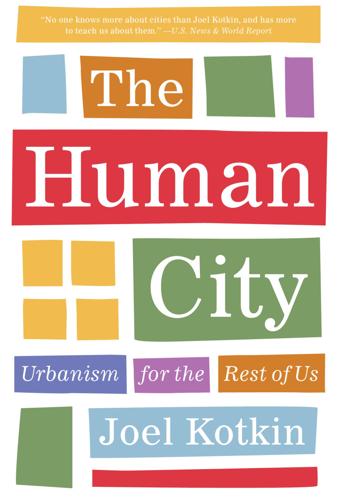
The Human City: Urbanism for the Rest of Us
by
Joel Kotkin
Published 11 Apr 2016
To him, the 2,500-square-foot (232-square-meter) home in the suburbs represents both an environmental disaster and a threat to the affordability of small residences for “singletons.”115 Nothing better illustrates the shift in the built environment of a post-familial society than the proliferation of plans for the construction of “micro-apartments” in cities like Singapore, Shanghai, Tokyo, New York, Seattle, and San Francisco. These residences of less than 300 square feet (28 square meters) would make even a two-bedroom co-op in Brooklyn, not to mention a single-family house like that of my Flatbush ancestors, seem like the Ponderosa Ranch and obviously are intended to house single young professionals; it is inconceivable for middle- or even working-class families to inhabit such spaces.116 PRICING OUT FAMILIES As previously mentioned, middle-income housing affordability constitutes a huge constraint on family formation in many cities.
…
See also Human city New York City black children living in, 156 childlessness in, 117 children in, 15–16 commuting time in, 68 as consumer city, 89 cost of space in, 111–112 diverse society of, 86 educational gap in, 166 environmental wastefulness of, 11 family households in, 144 financial jobs in, 186 foreign-born population of, 98 foreign housing investments in, 100–102 as global city, 84, 87–89, 107, 274n8 global influence of, 82 growth of, 51 Gunther on, 93 homogenization of, 106 housing bubble in, 134 and impact of life stages, 165 income spent on rent in, 174 inequality in, 40, 95–97 Le Corbusier on density of, 7 as megacity, 51 micro-units in, 12, 132–133 middle class in, 92 migration to, 173 as new consumer city, 37–38 in 19th century, 28 objection to densification in, 199 opposition to development priorities in, 13 population of, 52, 115 post-familialism in, 128 reinvention of city center in, 31 safety of, 166–167 subsidized housing in, 12 as transactional city, 32 as wealthy city, 52 Ng Sai-leung, 101 Nicolaides, Becky, 146 Nijman, Jan, 64 Nisbet, Robert, 125 Norquist, John, 161 North Africa, 138 North America birth rates in, 15 glamour zones in, 81 infrastructure of, 67 living conditions in industrial cities in, 28 middle class move to periphery, 116 renovation of cities in, 60 Singaporean immigrants from, 99 North Hempstead, New York, 177 Norway, 118 O Oakland, 156 Obudho, Robert, 76 Obudho, Rose, 76 Ogden, Utah, 126 Olmsted, Frederick Law, 29, 46, 176 Ong, Andrew, 131 Orange, California, 177 Orange County, 46, 185 Organic growth, 73, 199–200 Orwell, George, 146 Osaka, 51, 196 Osaka-Kobe-Kyoto, 52, 153 Owen, David, 10 Ozment, Steven, 114 P Pakistan, 126 Panama, 53 Pant, Vatsala, 70 Paris appeal of, 22 dispersion in, 28–29, 154, 155 foreign-born population of, 97 global influence of, 82 homogenization of, 106 housing prices in, 41 as imperial city, 24 of Napoleon III, 29 in 19th century, 28 population of, 52, 155 post-familialism in, 118 renovation of, 59, 116 suburbs of, 143, 159 traffic in, 187 as wealthy city, 52 Park, Robert, 21 Parks, 46 Patavinus, Titus Livius (Livy), 23 Pearce, Fred, 122–123 Pearce, Nick, 172 Pelton, Joseph, 187–188 Perth, 159 Peru, 53 “Peter Pan” effect, 131 Peter the Great, 23 Petrograd, 33 Pfeiffer, Deirdre, 157 Philadelphia, 149 Phoenix, 152, 287n140 Piiparinen, Richey, 173 Pilot, Frederick, 188 Pittsburgh, 173, 196 Planet of Cities (Angel), 14 Planned communities, 30–31, 176–177 Please Look After Mom (Shin), 123 Plutonomy, 39–40 Polycentricity, 9 Population, estimating, 270n18 The Population Bomb (Ehrlich), 194 Population centres, 269n5 Population growth among seniors, 181 as cause of sprawl, 2 in cities, 51 (See also individual cities) density as natural contraceptive against, 9–10 in developing countries, 50 at end of 19th century, 115 slowdown of, 194–196 in suburbs, 154 Porter, Douglas, 165 Portland, 42, 134, 157, 173, 184 Post-familialism, 116–140 and aging population, 122–125 and changing sexual mores, 128–130 cultural influence of, 130–132 and dissolution of family ties, 134–136 eastern Asian, 119–122 emergence of, 116–117 European, 117–119 housing affordability in, 133–134 Japanese, 121–122 need for migrants to, 136–139 new value system in, 125–126 and restoration of familialism, 139–140 Seoul, 120–121 and urban form, 132–133 “urban tribes” in, 127–128 Poverty children living in, 32 in core cities, 159 in developing world, 169–170 growing concentration of, 42 in India, 65 in industrial cities, 27 in London, 94 and modern megacities, 61–62 in New York city, 97 in suburbs, 159–160 in Tokyo, 95 Prague, 162 Producer cities, 25–26 Productivity agricultural, 73, 115, 193, 194 of large cities, 8 Prosperity, density and, 54–56 Providence, 12 Provo, 9, 126 Public spaces, 163 Public transit, 187 Pulte, 183 Pune, India, 74 Purpose of cities, 2, 5–18 affordability and density, 11–12 and childlessness, 15–16 core cities, 17 cult of density, 6–8 economic, 8–9 environmental advantages, 9–11 and human scale, 12–14 and life stages, 16–18 and trend toward dispersion, 14–15 Putin, Vladimir, 139 Putnam, Robert, 135 Q Quality of life, 65–67 R Race, 42, 156–160 Radburn, New Jersey, 30 Rajaratnam, S., 104 Raleigh, 9, 46 Raleigh-Durham, 185 The Randstad, 81 Raymond, André, 60 Redefining cities, 2 Rees, Philip, 158 Religion in ancient cities, 21–22 in Dutch cities, 26 and familialism, 113, 114 in imperial cities, 23 spread by Chinese, 85 and trend toward secularism, 125–126 Renn, Aaron, 22, 186 Rents, 174 Reston, Virginia, 177 Retro-urbanism, 7 on climate change, 189–190 on cost of city living, 11–12 on decline of suburbia, 152 on economic purpose of cities, 8–9 on environmental advantages, 9–11 and impact of life stages, 165 as moral imperative, 10 on suburbanism, 162, 163 Richardson, Harry, 187 Richmond, 186 Richmond Hill (Canada), 158 Riedl, Marc, 65–66 Rio de Janeiro, 53, 73 Riverside, Illinois, 176 Riverside-San Bernardino, 159 Rogers, Richard, 148 Romania, 138 Rome, 22, 187 Rome, ancient, 23–24, 56–57, 85, 113 Roosevelt, Franklin D., 150 Rosenfeld, Michael, 128 Rotterdam, 154 Rural economies, 50 Rurbanization, 76 Russia, 55, 98, 139, 194–195 Rust Belt cities, 173 Rybczynski, Witold, 41 S Sa’at, Alfian, 99 Sacramento, 159 Sacred space, 21–23 Safety, 166–167 Saint Petersburg, 23, 33, 59 Salt Lake City, 126, 186 San Antonio, 152 San Diego, 152 San Francisco childlessness in, 117 children in, 16 decreased diversity in, 42 family households in, 144 financial jobs in, 186 as global city, 84 high-tech-related businesses in, 8 housing market in, 101–102 income spent on rent in, 174 loss of racial/ethnic diversity in, 157 as luxury-oriented city, 40 micro-apartments in, 132–133 post-familialism in, 128 racial income inequality in, 156–157 reinvention of city center in, 31 same-sex couple households in, 179 scenery of, 38 suburban inequality around, 159 as transactional city, 32 San Francisco Bay Area, 274n16 construction costs in, 11–12 foreign housing investments in, 101 global influence of, 81–83 housing bubble in, 134 as “necessary” region, 83–84 Sanitation, 68–69, 116 San Mateo County, 8 Santa Clara, California, 184 Santa Monica, 166 São Paulo, 13, 68, 69, 73 Sassen, Saskia, 80 Saunders, Pete, 41–42 Scandinavia, 136 Schama, Simon, 27 Schill, Mark, 96–97 Scruton, Roger, 146 Seaside, Florida, 161 Seattle children in, 16 decreased diversity in, 42 density of, 183 housing bubble in, 134 loss of racial/ethnic diversity in, 157 micro-apartments in, 132–133 micro-units in, 12 as “necessary” city, 84 scenery of, 38 Secularism, 125 Segregation, 156 Self, Will, 13 Sellers, Charles, 148 Sellers, Christopher, 191 Seneca, 109 Seoul colonialism in, 60 cultural district in, 107 fertility rate in, 16 growth of, 51, 176 and immigration, 87 as political power center, 25 post-familialism in, 119–121 traffic in, 187 Seoul-Incheon, 52 Sexual mores, 128–130 Shanghai, 25, 87 dispersion in, 155 foreign housing investments in, 100 as global city, 90–92 housing prices in, 175 and immigration, 87 micro-apartments in, 132–133 population of, 74 post-familialism in, 119–120 Sharma, R.
…
See also Human city New York City black children living in, 156 childlessness in, 117 children in, 15–16 commuting time in, 68 as consumer city, 89 cost of space in, 111–112 diverse society of, 86 educational gap in, 166 environmental wastefulness of, 11 family households in, 144 financial jobs in, 186 foreign-born population of, 98 foreign housing investments in, 100–102 as global city, 84, 87–89, 107, 274n8 global influence of, 82 growth of, 51 Gunther on, 93 homogenization of, 106 housing bubble in, 134 and impact of life stages, 165 income spent on rent in, 174 inequality in, 40, 95–97 Le Corbusier on density of, 7 as megacity, 51 micro-units in, 12, 132–133 middle class in, 92 migration to, 173 as new consumer city, 37–38 in 19th century, 28 objection to densification in, 199 opposition to development priorities in, 13 population of, 52, 115 post-familialism in, 128 reinvention of city center in, 31 safety of, 166–167 subsidized housing in, 12 as transactional city, 32 as wealthy city, 52 Ng Sai-leung, 101 Nicolaides, Becky, 146 Nijman, Jan, 64 Nisbet, Robert, 125 Norquist, John, 161 North Africa, 138 North America birth rates in, 15 glamour zones in, 81 infrastructure of, 67 living conditions in industrial cities in, 28 middle class move to periphery, 116 renovation of cities in, 60 Singaporean immigrants from, 99 North Hempstead, New York, 177 Norway, 118 O Oakland, 156 Obudho, Robert, 76 Obudho, Rose, 76 Ogden, Utah, 126 Olmsted, Frederick Law, 29, 46, 176 Ong, Andrew, 131 Orange, California, 177 Orange County, 46, 185 Organic growth, 73, 199–200 Orwell, George, 146 Osaka, 51, 196 Osaka-Kobe-Kyoto, 52, 153 Owen, David, 10 Ozment, Steven, 114 P Pakistan, 126 Panama, 53 Pant, Vatsala, 70 Paris appeal of, 22 dispersion in, 28–29, 154, 155 foreign-born population of, 97 global influence of, 82 homogenization of, 106 housing prices in, 41 as imperial city, 24 of Napoleon III, 29 in 19th century, 28 population of, 52, 155 post-familialism in, 118 renovation of, 59, 116 suburbs of, 143, 159 traffic in, 187 as wealthy city, 52 Park, Robert, 21 Parks, 46 Patavinus, Titus Livius (Livy), 23 Pearce, Fred, 122–123 Pearce, Nick, 172 Pelton, Joseph, 187–188 Perth, 159 Peru, 53 “Peter Pan” effect, 131 Peter the Great, 23 Petrograd, 33 Pfeiffer, Deirdre, 157 Philadelphia, 149 Phoenix, 152, 287n140 Piiparinen, Richey, 173 Pilot, Frederick, 188 Pittsburgh, 173, 196 Planet of Cities (Angel), 14 Planned communities, 30–31, 176–177 Please Look After Mom (Shin), 123 Plutonomy, 39–40 Polycentricity, 9 Population, estimating, 270n18 The Population Bomb (Ehrlich), 194 Population centres, 269n5 Population growth among seniors, 181 as cause of sprawl, 2 in cities, 51 (See also individual cities) density as natural contraceptive against, 9–10 in developing countries, 50 at end of 19th century, 115 slowdown of, 194–196 in suburbs, 154 Porter, Douglas, 165 Portland, 42, 134, 157, 173, 184 Post-familialism, 116–140 and aging population, 122–125 and changing sexual mores, 128–130 cultural influence of, 130–132 and dissolution of family ties, 134–136 eastern Asian, 119–122 emergence of, 116–117 European, 117–119 housing affordability in, 133–134 Japanese, 121–122 need for migrants to, 136–139 new value system in, 125–126 and restoration of familialism, 139–140 Seoul, 120–121 and urban form, 132–133 “urban tribes” in, 127–128 Poverty children living in, 32 in core cities, 159 in developing world, 169–170 growing concentration of, 42 in India, 65 in industrial cities, 27 in London, 94 and modern megacities, 61–62 in New York city, 97 in suburbs, 159–160 in Tokyo, 95 Prague, 162 Producer cities, 25–26 Productivity agricultural, 73, 115, 193, 194 of large cities, 8 Prosperity, density and, 54–56 Providence, 12 Provo, 9, 126 Public spaces, 163 Public transit, 187 Pulte, 183 Pune, India, 74 Purpose of cities, 2, 5–18 affordability and density, 11–12 and childlessness, 15–16 core cities, 17 cult of density, 6–8 economic, 8–9 environmental advantages, 9–11 and human scale, 12–14 and life stages, 16–18 and trend toward dispersion, 14–15 Putin, Vladimir, 139 Putnam, Robert, 135 Q Quality of life, 65–67 R Race, 42, 156–160 Radburn, New Jersey, 30 Rajaratnam, S., 104 Raleigh, 9, 46 Raleigh-Durham, 185 The Randstad, 81 Raymond, André, 60 Redefining cities, 2 Rees, Philip, 158 Religion in ancient cities, 21–22 in Dutch cities, 26 and familialism, 113, 114 in imperial cities, 23 spread by Chinese, 85 and trend toward secularism, 125–126 Renn, Aaron, 22, 186 Rents, 174 Reston, Virginia, 177 Retro-urbanism, 7 on climate change, 189–190 on cost of city living, 11–12 on decline of suburbia, 152 on economic purpose of cities, 8–9 on environmental advantages, 9–11 and impact of life stages, 165 as moral imperative, 10 on suburbanism, 162, 163 Richardson, Harry, 187 Richmond, 186 Richmond Hill (Canada), 158 Riedl, Marc, 65–66 Rio de Janeiro, 53, 73 Riverside, Illinois, 176 Riverside-San Bernardino, 159 Rogers, Richard, 148 Romania, 138 Rome, 22, 187 Rome, ancient, 23–24, 56–57, 85, 113 Roosevelt, Franklin D., 150 Rosenfeld, Michael, 128 Rotterdam, 154 Rural economies, 50 Rurbanization, 76 Russia, 55, 98, 139, 194–195 Rust Belt cities, 173 Rybczynski, Witold, 41 S Sa’at, Alfian, 99 Sacramento, 159 Sacred space, 21–23 Safety, 166–167 Saint Petersburg, 23, 33, 59 Salt Lake City, 126, 186 San Antonio, 152 San Diego, 152 San Francisco childlessness in, 117 children in, 16 decreased diversity in, 42 family households in, 144 financial jobs in, 186 as global city, 84 high-tech-related businesses in, 8 housing market in, 101–102 income spent on rent in, 174 loss of racial/ethnic diversity in, 157 as luxury-oriented city, 40 micro-apartments in, 132–133 post-familialism in, 128 racial income inequality in, 156–157 reinvention of city center in, 31 same-sex couple households in, 179 scenery of, 38 suburban inequality around, 159 as transactional city, 32 San Francisco Bay Area, 274n16 construction costs in, 11–12 foreign housing investments in, 101 global influence of, 81–83 housing bubble in, 134 as “necessary” region, 83–84 Sanitation, 68–69, 116 San Mateo County, 8 Santa Clara, California, 184 Santa Monica, 166 São Paulo, 13, 68, 69, 73 Sassen, Saskia, 80 Saunders, Pete, 41–42 Scandinavia, 136 Schama, Simon, 27 Schill, Mark, 96–97 Scruton, Roger, 146 Seaside, Florida, 161 Seattle children in, 16 decreased diversity in, 42 density of, 183 housing bubble in, 134 loss of racial/ethnic diversity in, 157 micro-apartments in, 132–133 micro-units in, 12 as “necessary” city, 84 scenery of, 38 Secularism, 125 Segregation, 156 Self, Will, 13 Sellers, Charles, 148 Sellers, Christopher, 191 Seneca, 109 Seoul colonialism in, 60 cultural district in, 107 fertility rate in, 16 growth of, 51, 176 and immigration, 87 as political power center, 25 post-familialism in, 119–121 traffic in, 187 Seoul-Incheon, 52 Sexual mores, 128–130 Shanghai, 25, 87 dispersion in, 155 foreign housing investments in, 100 as global city, 90–92 housing prices in, 175 and immigration, 87 micro-apartments in, 132–133 population of, 74 post-familialism in, 119–120 Sharma, R.

Stuck: How the Privileged and the Propertied Broke the Engine of American Opportunity
by
Yoni Appelbaum
Published 17 Feb 2025
The zoning codes he disseminated generally ban these forms of housing, leaving little in the way of low-cost options. The poor are then forced to stay in regions of the country with concentrated deprivation and limited prospects, to move to cities with illegally converted rental units with few protections, or to go unhoused entirely. Some jurisdictions are now experimenting with what they call micro-apartments or tiny houses, and others with co-housing, but such arrangements are usually aimed at young college graduates and regulated in ways that make them even more expensive than most existing housing units. With my first paycheck as a municipal employee, I rented a 150-square-foot studio in an aging Manhattan apartment building.
…
With my first paycheck as a municipal employee, I rented a 150-square-foot studio in an aging Manhattan apartment building. It had a tiny closet, a bathroom that was scarcely any larger, and along one wall a two-burner range, a sink, and a refrigerator. The window looked out on an air shaft. For this incomparable luxury, I paid 43 percent of my pretax income and considered it a steal. Most micro-apartments are required to be at least three times this size. But my nano-apartment allowed me to live close to a transit line, hold a job, cook my own meals, and enjoy a measure of privacy. Other New Yorkers bribe superintendents to turn a blind eye as they subdivide apartments or live in the illegally converted basement units that have proliferated in the outer boroughs, with sometimes deadly consequences.
…
A B C D E F G H I J K L M N O P Q R S T U V W X Y Z A Abbott, Sammie, 225 ACLU, 202, 240 Adams, John Quincy, 84 affordable housing crisis homelessness and, 219, 244 as mobility crisis, 6–7, 242 affordable housing crisis solutions, 241–42 cash transfer to Americans living below poverty line, 244 clarity of rules and, 246–48 consistency in application of rules needed to solve, 245–46 housing in right places, 248–51 number of new units needed, 251 tolerance of imperfection, 242–44 age and mobility, 11–12 agency choosing communities and, 19 geographic mobility and, 19, 242 Moving Day as assertion of, 75 Aldern, Clayton Page, 244 Ambler Realty Company, 148, 149–54 American character ability to choose community, 7, 9, 78 association mania as part of, 77–78 closure of frontier and, 67 geographic mobility as defining feature of, 7–8, 60–62, 65, 71, 204–5 racism’s role in, 83 xenophobia’s role in, 83 America Plus, 194 Andrews, Josiah Bishop, 70–71 apartment houses as “bane” of owners of single-family homes, 104 FHA financed, 183 limits of developable land and, 102 micro-apartments, 245 negative effect on life of, 127 rents, 134–35 restrictive covenants separating single- and two-family homes from, 182 zoning ordinances and, 103 associations American mania for, 77–78 ethnic, 82–83, 256 federations of local, 79 geographic mobility and membership in, 80–81 for historic preservation, 234 of home owners, 238–39 individualism and, 78 individual’s sense of identity and, 81 migrants as members of, 79, 272n79 neighborhood improvement, 238–39 post-World War II membership in, 206 as providing instant communities, 79 religion as matter of choice and not inheritance, 78 voluntary nature of, 79–80, 84 The Atlantic, 21 automobile industry, 158, 171–72, 173–74, 175, 184, 210, 211 B Baker, Newton, 148 Baldwin, James, 210 Baltimore, 139, 191, 238 Barbier v.
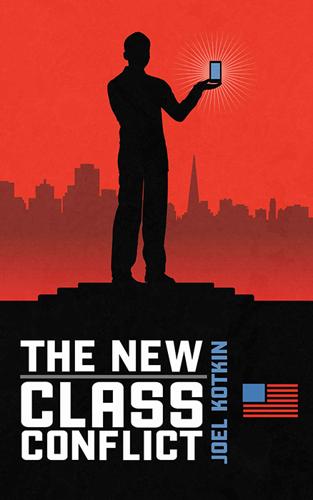
The New Class Conflict
by
Joel Kotkin
Published 31 Aug 2014
News and World Report, November 15, 2013; Carolyn Said, “Micro-Apartment Developments on Rise in S.F.,” SFGate, November 11, 2013, http://www.sfgate.com/business/article/Micro-apartment-developments-on-rise-in-S-F-4951775.php; Roger Vincent, “$50-Million Complex of Micro Apartments Finished in Santa Monica,” Los Angeles Times, July 4, 2013; Matt Johnson, “Micro Apartments? Not in Our Neighborhood, Hollywood Residents Say,” KATU News, November 20, 2013, http://www.katu.com/news/local/Micro-apartments-Not-in-our-neighborhood-232744831.html. 102. Vinnie Mancuso, “Micro-Apartments Could Be Hazardous to Your Mental Health,” New York Observer, December 20, 2013. 103.
…
These are either being built or planned in such cities as Seattle, New York, San Francisco, Santa Monica, and Portland.101 Such units have appeal to developers for whom cramming, especially with an urban subsidy in hand, may be particularly profitable. Yet a considerable amount of research shows that life in ultra-small apartments has a depressing effect on people. “Sure, these micro-apartments may be fantastic for young professionals in their 20s,” notes Dak Kopec, director of Design for Human Health at Boston Architectural College. “But they definitely can be unhealthy for older people, say in their 30s and 40s, who face different stress factors that can make tight living conditions a problem.”102 According to Kopec, the space-saving trend of tiny apartments can lead to increased claustrophobia, domestic abuse, and alcoholism.
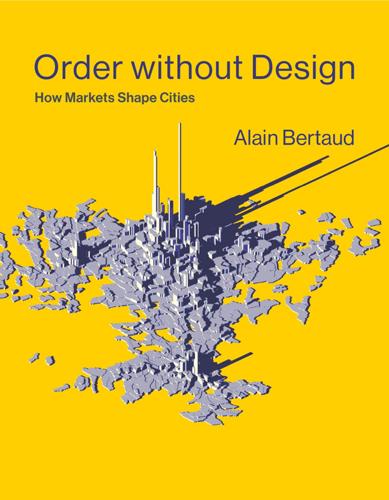
Order Without Design: How Markets Shape Cities
by
Alain Bertaud
Published 9 Nov 2018
We thoroughly enjoyed our stay in this tenement because of its great location. In 1987, the minimum apartment size allowed by regulations was 37.2 square meters. The plan of a studio of this size, built in 2016, is shown in plan D in figure 6.6. Finally, the plan of one of the 55 micro-apartments of 28 square meters to be built in the middle of Manhattan mentioned above is shown in plan E. The micro-apartments are still slightly larger than the renovated Old Law Tenements that still form a significant part of Manhattan and Brooklyn housing stock (I could not find the exact number of Old Law Tenements still being used in New York City, but they are easily identifiable on Google Earth imagery).
…
Whatever the reasons for the international differences, my point is that housing consumption adjusts when there is a discrepancy between supply and demand for housing. Figure 6.5 Share of young people aged 25–34 living with their parents in Europe and in the United States, 2010. Source: Pew Research Center, Washington, DC. Lowering “Minimum Socially Acceptable” Housing Standards: Mini- and Micro-Apartments in New York In New York, a 1987 city zoning regulation specified that the area of apartments should be at least 37.2 square meters. But the supply of apartments of this size is constrained by another zoning regulation that puts a maximum limit on the number of dwelling units per area, thus implicitly reducing the number of small apartments that could be built in a block, regardless of whether there is a demand for such apartments.
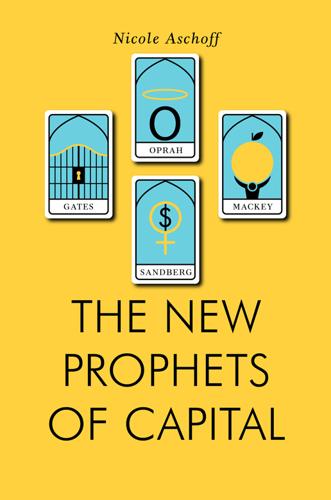
The New Prophets of Capital
by
Nicole Aschoff
Published 10 Mar 2015
Minimalism is chic and restorative—thousands of people have embarked on Dave Bruno’s “100 thing challenge,” paring down their belongings to 100 items. People scrub their hands and souls with the “conscience clearing power” of J.R. Watkins natural soap. Graham Hill, an environmental entrepreneur, has developed a new line of luxury micro-apartments for urban dwellers. The 420-square-foot prototype debuted in 2012, complete with moving wall, telescoping coffee table ($3,325) and high-tech Murphy bed ($21,250) to save space. Hill argues that Americans of all socioeconomic backgrounds simply buy too much stuff. All this stuff puts us in debt, hurts the planet, and generally makes us unhappy.
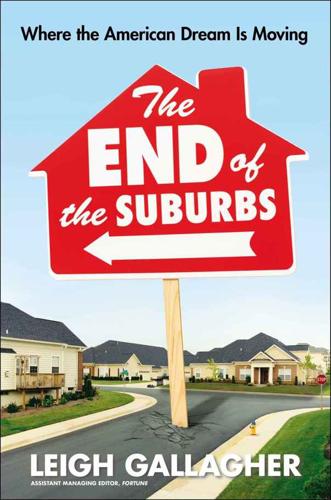
The End of the Suburbs: Where the American Dream Is Moving
by
Leigh Gallagher
Published 26 Jun 2013
many are willing to pay for the ability to walk: S. Mitra Kalita and Robbie Whelan, “No McMansions for Millennials,” Wall Street Journal, January 13, 2011. the 2011 figures showed birth rates: “Births: Preliminary Data for 2011,” CDC National Vital Statistics Reports. Similar efforts are under way: Vanessa Wong, “Micro-Apartments in the Big City: A Trend Builds,” Bloomberg Businessweek, March 14, 2013. Arthur C. Nelson: Heather LaVarnway, “The Changing American Dream: Shifting Trends in Who We Are and How We Live,” February 2012; coverage of Nelson’s December 2011 address at Pace University Land Use Law Center’s conference on sustainable development.

Uncanny Valley: A Memoir
by
Anna Wiener
Published 14 Jan 2020
Amid tidy rows of pastel Edwardians, the flipped houses looked like dead teeth, muted and ominous in freshly painted, staid shades of gray. Newly flush twentysomethings became meek, baby-faced landlords, apologetically invoking arcane housing law to evict inherited long-term tenants and clear the way for condo conversions. Real estate developers planned blocks of micro-apartments, insistent that they weren’t just weekend crash pads, but the new frontier of millennial living: start small, scale up later. Against the former factories and chipping Victorians, the car-repair shops and leather bars, downtown’s new developments looked placeless, adrift. To differentiate themselves, they added electronic locks and Wi-Fi-enabled refrigerators, and called the apartments smart.
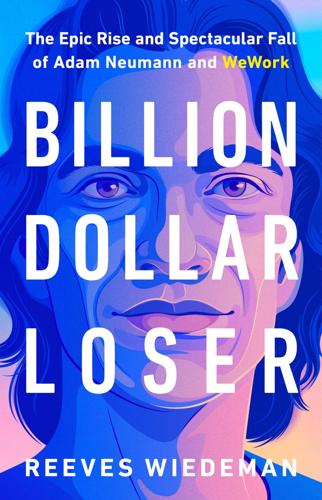
Billion Dollar Loser: The Epic Rise and Spectacular Fall of Adam Neumann and WeWork
by
Reeves Wiedeman
Published 19 Oct 2020
“If they say, ‘What does that mean?’ it’s a conversation topic. We’re already there!” He said that each branch of the company aimed to make the world a better place—while making plenty of money in the process. WeWork’s mission was to help people “make a life and not just a living.” He believed that WeLive, which rented out microapartments with large communal spaces, could mitigate increases in loneliness and suicide so that “no one ever feels alone.” WeGrow, the newest venture, was an elementary school run by his wife, Rebekah, with an annual tuition of up to $42,000 and a goal of “unleashing every person’s superpower.” I asked Neumann what his superpower was.

Ghost Road: Beyond the Driverless Car
by
Anthony M. Townsend
Published 15 Jun 2020
This is not a sustainable path. Sure, the web of continuous delivery has its green lining. Every garment borrowed for a day from Rent the Runway is one less that must be handmade only to spend its future mostly hung in a closet. Every box in a MakeSpace warehouse is one that lets us cram more microapartments into high-efficiency Manhattan high-rises. And every premeasured meal purveyed by Blue Apron produces zero food waste in my kitchen. Most important of all, these deliveries stop me from taking a trip by car several times a month—and even after accounting for the diesel-spewing trucks that bring this stuff home for me, we all end up way ahead on the carbon counter.
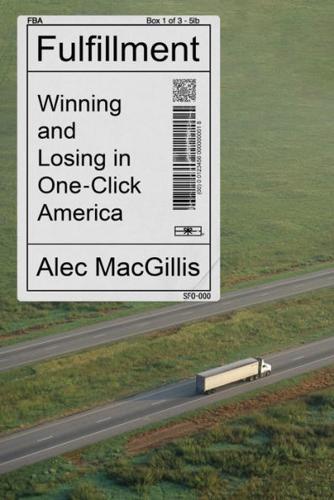
Fulfillment: Winning and Losing in One-Click America
by
Alec MacGillis
Published 16 Mar 2021
Dystopian elements in cities such as San Francisco—the homeless defecating on sidewalks in a place with $24 lunch salads and one-bedroom apartments renting for $3,600 on average; high-paid tech workers boarding shuttles to suburban corporate campuses while lower-paid workers settled for 200-square-foot “micro-apartments” or dorm-style arrangements with shared bathrooms or predawn commutes from distant cities such as Stockton—were a feature of both local and national inequality. The growing imbalance of wealth was making life harder in both sorts of places. It was throwing the whole country off-kilter. * * * Economists and sociologists who worried about this new reality began trying to identify its causes.
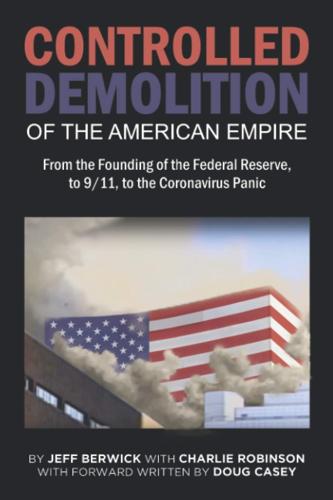
The Controlled Demolition of the American Empire
by
Jeff Berwick
and
Charlie Robinson
Published 14 Apr 2020
The actual plan of Agenda 2030, not just the 17 talking points but their goal, is to create two different groups of humans like the feudal society of serfs and kings. The lower class of “useless eaters” gets fed the nutritionally deficient GMO food and they can chase it down with fluoride-laden polluted water, the same water that will be strictly rationed due to water shortages. They will be forced to live in 300 square foot micro-apartments inside high-density cities in order to combat global warming, and their carbon footprint will be monitored and taxed through the smart grid while imposing forced austerity on the masses. Due to the tight living quarters, vaccination will be mandatory for “herd immunity”, and all children will need to be fully immunized with all 100+ shots before they are allowed to attend the government schools teaching Common Core.